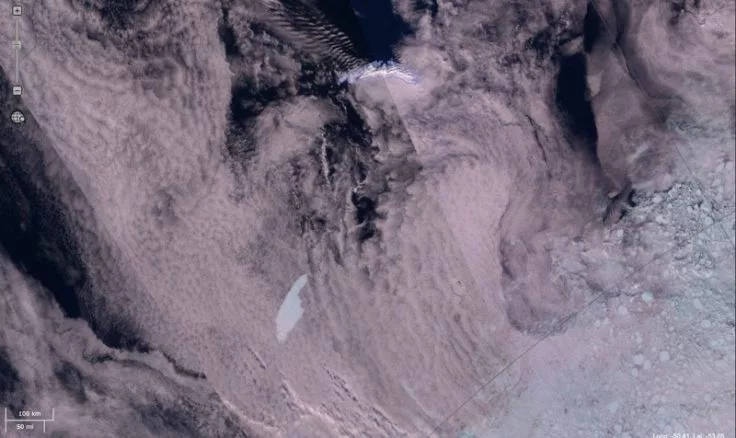Satellite images indicate that an iceberg 158 km (98 mi) long and 48 km (30 mi) wide is floating towards the island of South Georgia in the southern Atlantic, where it could cause damage to the local wildlife, including penguins and seals, if it runs aground.
In 2017, a gigantic sheet of ice covering 6,000 km² (2,300 mi²) broke free from the Larsen C ice shelf in Antarctica and drifted out to sea. Originally designated A-68, it later calved off three smaller bergs, after which it was renamed A-68a. This event sparked considerable scientific interest, especially after freeing up a seabed that's been encased in ice for 120,000 years. And now it looks as if the iceberg could have unpleasant consequences as the winds and tides send it toward South Georgia.
A British Overseas Territory, South Georgia is uninhabited except for visiting scientists but is home to a variety of polar life, including elephant seals, fur seals, and king penguins. Unfortunately, despite being one of the most isolated places on Earth, it's also suffered a number of ecological setbacks over the years, including the introduction of red deer and rodents by Norwegian whalers who once ran a station there, and the occasional iceberg.
With its large size and refusal to break up despite the large fractures seen on radar surveys, A68a could pose a major problem for the local seals and penguins if it collides with the island or grounds in the shallows. This isn't so much a case of direct damage as disrupting breeding and feeding patterns of the birds and animals that depend upon the sea for food.

“Ecosystems can and will bounce back of course, but there’s a danger here that if this iceberg gets stuck, it could be there for 10 years," says Professor Geraint Tarling, an ecologist at the British Antarctic Survey (BAS). "An iceberg has massive implications for where land-based predators might be able to forage.
“When you’re talking about penguins and seals during the period that’s really crucial to them – during pup- and chick-rearing – the actual distance they have to travel to find food (fish and krill) really matters. If they have to do a big detour, it means they’re not going to get back to their young in time to prevent them starving to death in the interim.
“However, the iceberg does bring benefits if it remains in the open ocean. It carries enormous quantities of dust that fertilize the ocean plankton in the water that cascades up the food chain. This plankton also draws in carbon from the atmosphere, partially offsetting human CO2 emissions.”
BAS stresses that it's by no means certain that the iceberg will strike South Georgia. It's possible that it could loop around the south of the island and then along the edge of the continental shelf to the northwest. However, to be on the safe side, the Survey is requesting that ESA gather more satellite images from its pair of Sentinel-1 radar satellites and other spacecraft.
Source: BAS





